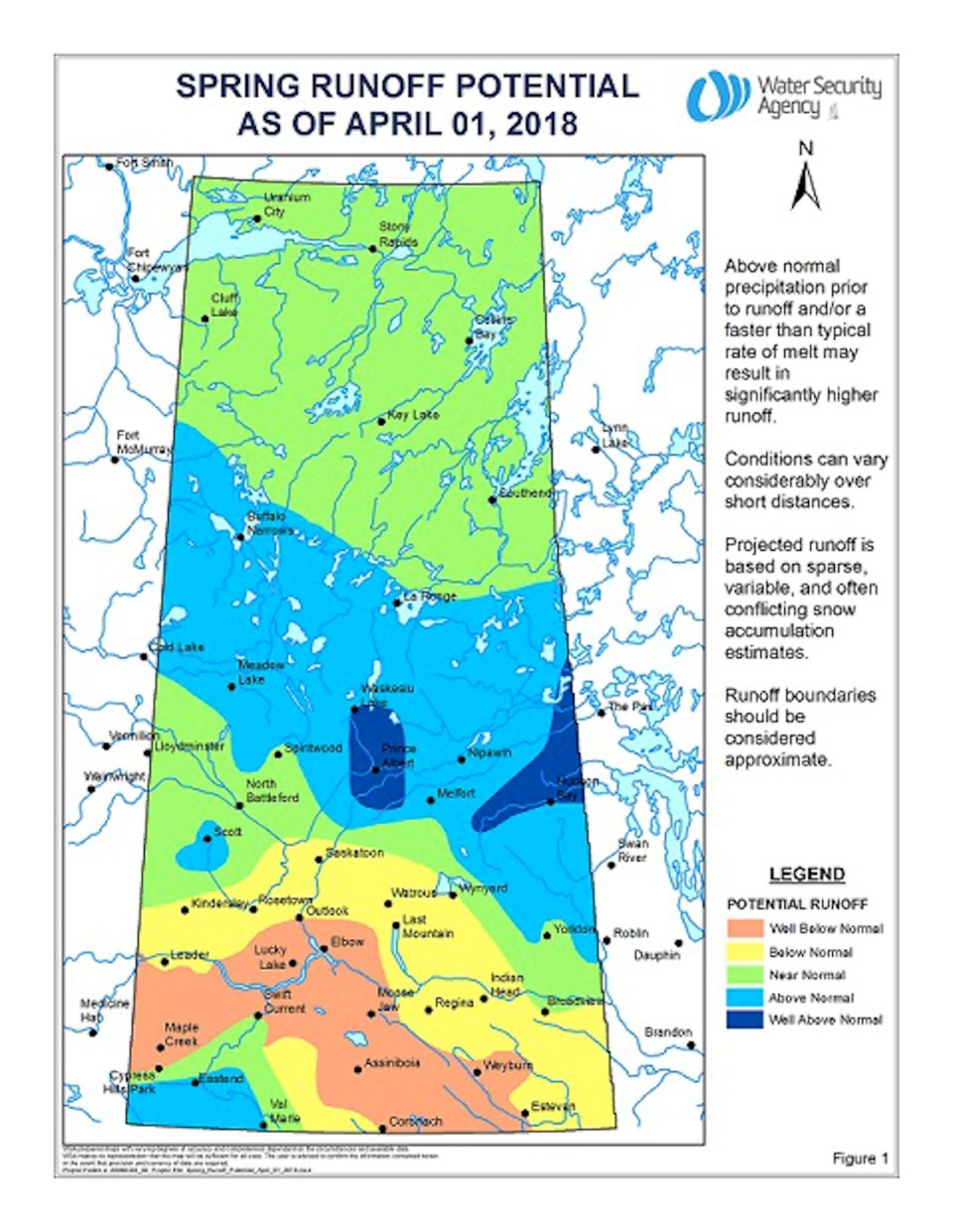Today, the Water Security Agency (WSA) released the April spring runoff forecast.
Snowfall across most of Saskatchewan was well above normal in March, increasing the runoff potential across the province with northern and southern Saskatchewan showing two different outlooks.
Moisture conditions going into winter freeze-up were well below normal across southern Saskatchewan, with very little precipitation during summer and fall of 2017, and near to above normal across northern Saskatchewan.
Winter snow accumulation to April 1, 2018, was generally near average across Saskatchewan with the exception of an area south of the Cypress Hills and near the communities of Scott, Prince Albert and Hudson Bay, which have received above average accumulations.
Much of northern Saskatchewan is expecting to see an above normal spring runoff with areas around Scott, Hudson Bay and north of Prince Albert up to Waskesiu Lake likely to experience well above normal runoff. Widespread flooding is not expected in these areas, but localized flooding, minor out of bank flows and overtopping of roadways could occur.
In southern Saskatchewan, most areas are likely to experience a below to well below normal spring runoff outside of an above normal pocket in the southwest corner near Eastend to Val Marie.
With below normal temperatures expected to occur across the province in early April, snowmelt runoff will be later than normal. This increases the risk of a rapid melt that can result in higher than expected runoff and potentially some flood-related issues.
Some agricultural water supply issues began to emerge in late summer 2017. In the areas where well below average 2018 snowmelt runoff is projected, these water supply shortages may intensify and expand to additional areas.
The snowpack over the eastern slopes of the Rocky Mountains is generally well above average for this time of year. Lake Diefenbaker is currently 0.7 metres below its normal level for this time of year, but is expected to be at desirable summer operating levels by July.
WSA will continue to monitor the 2018 spring runoff conditions across Saskatchewan. If warranted, further updates will be issued as the spring runoff progresses.
For more information on stream flows and lake levels, visit www.wsask.ca.

